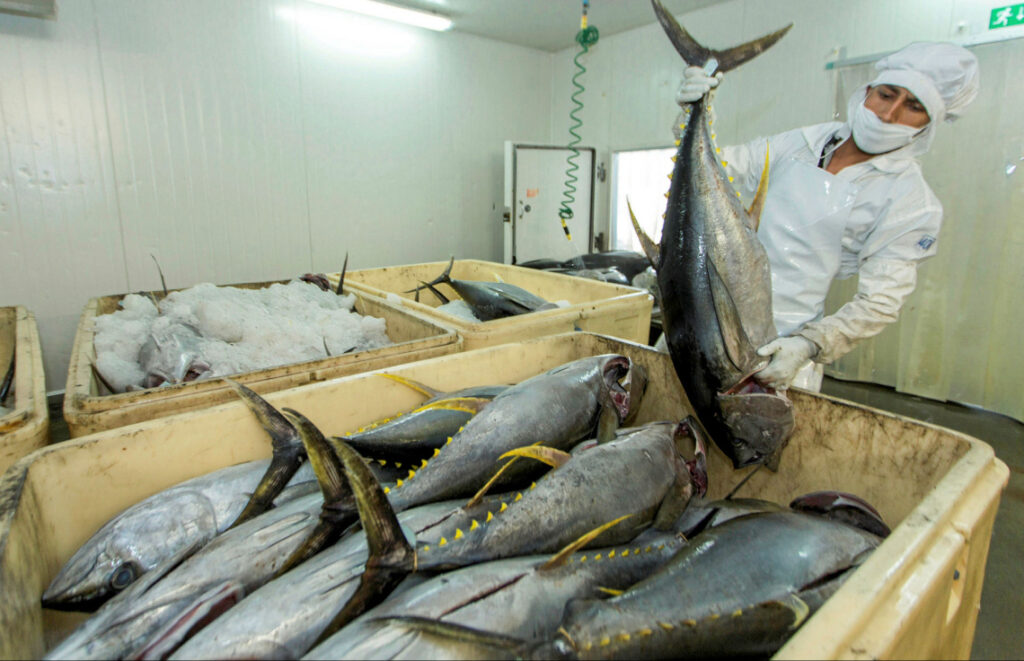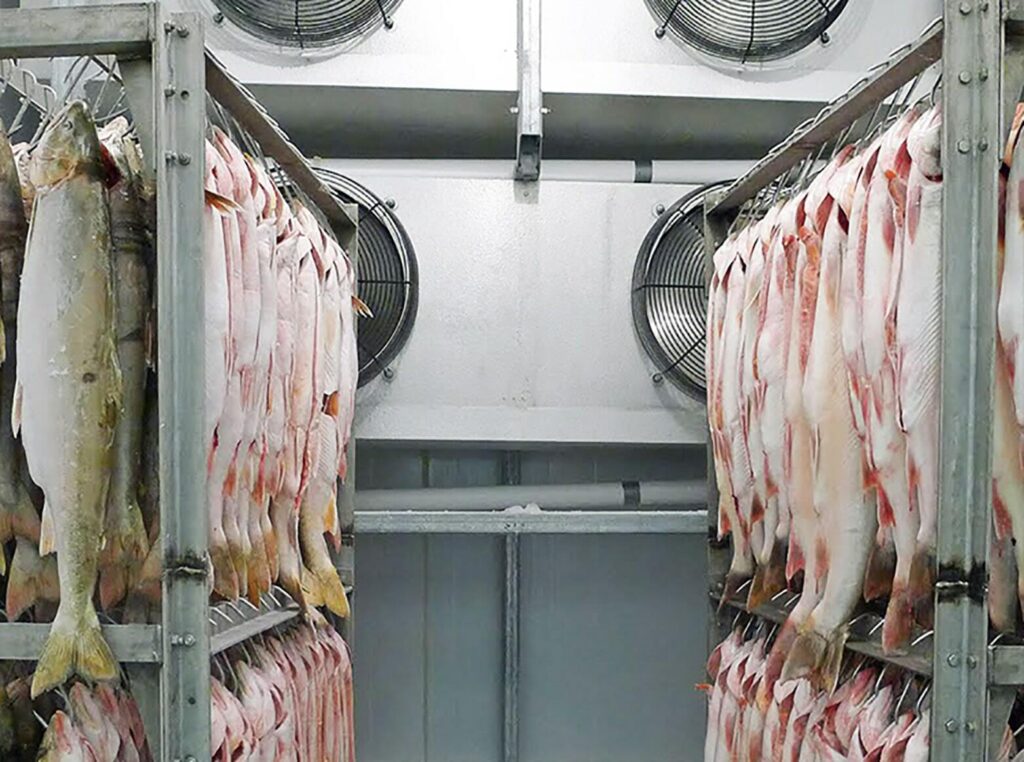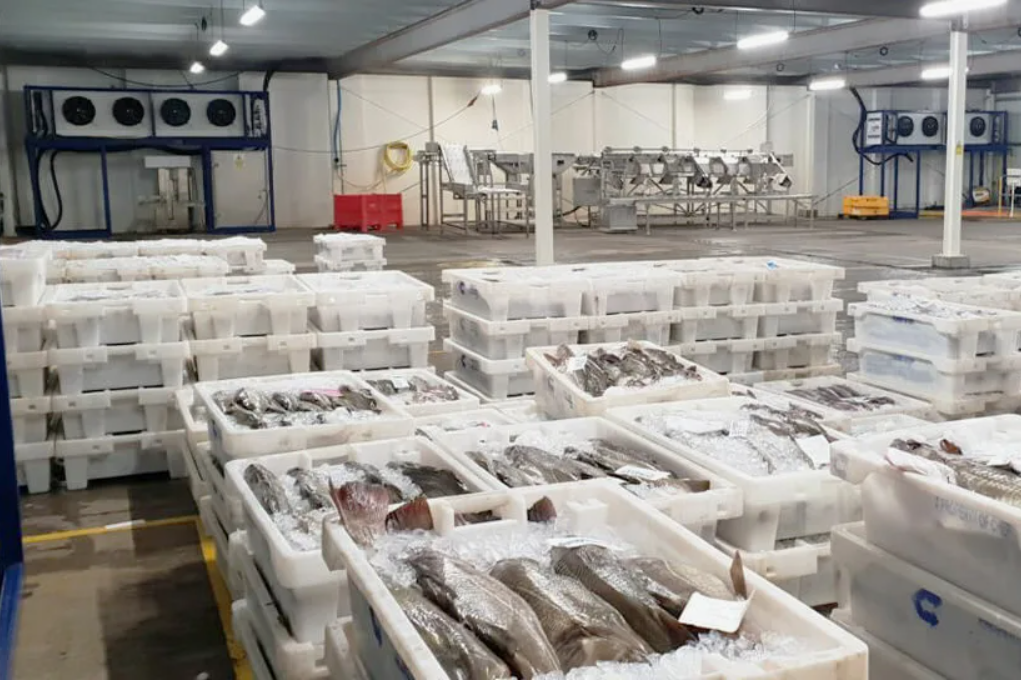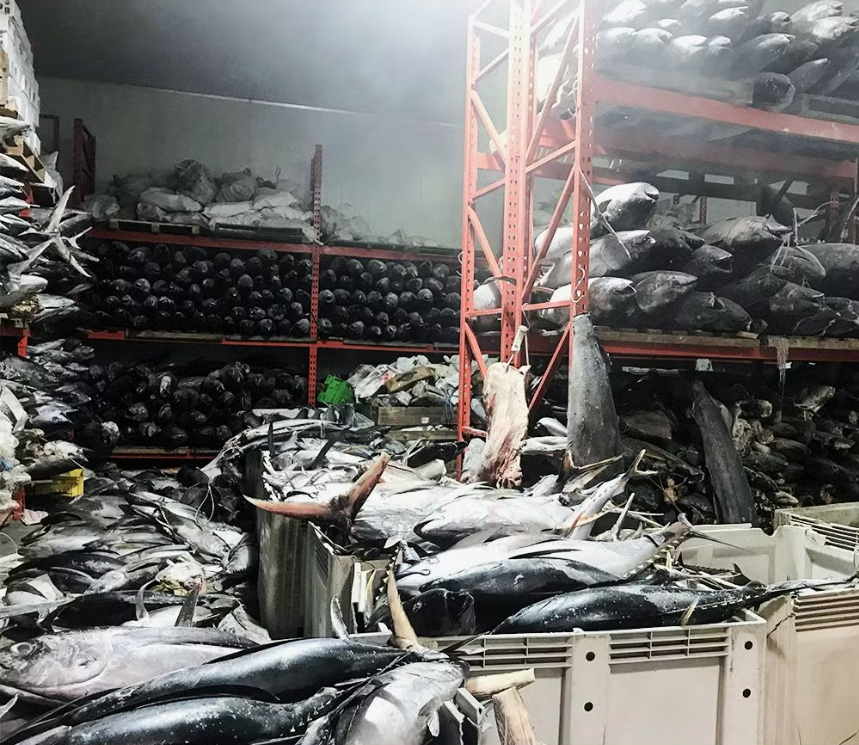Cold room for fish is very important for seafood industry. Fish spoils faster than most food. It contains high protein and moisture. Bacteria grow very fast on fresh fish. So the seafood industry needs strict cooling conditions. Cold room for fish gives seafood a stable temperature control and protect freshness. They support long-term storage and safe transportation.
Cold rooms for fish differ from other cold rooms. Fish requires lower temperature and faster freezing. The design must include strong power, thick insulation, and smart airflow. Every detail affects product quality.
Characteristics
Fish cold rooms focus on freshness and fast cooling. Fresh fish needs storage near -2°C to +2°C. Frozen fish needs -18°C or lower. Many seafood products demand rapid freezing. Fast freezing keeps small ice crystals inside meat. Small crystals protect texture and nutrition. Slow freezing harms taste and structure.
Cooling systems must respond quickly to load changes. Workers often bring large amounts of fresh fish into the room. The temperature rises fast. Strong equipment recovers ideal temperature quickly.
Fish releases liquid during handling. The storage area must handle moisture. Humidity control protects product weight. Good airflow design keeps conditions even everywhere. Shelves support circulation and reduce contact contamination.
Surfaces need high hygiene standards. Fish contains salt. Salt causes corrosion on metal parts. So many rooms use stainless steel covers. Floor design supports heavy pallets and prevents slipping. Waterproof lighting and wires avoid damage.
Strong insulation reduces temperature loss. Doors close tightly and block air leakage. The entire system protects food and saves energy. These characteristics make fish cold rooms essential for modern seafood companies.

Refrigeration Temperature
Fish cold rooms use lower temperatures than standard cold rooms. Vegetables usually need 2°C to 10°C. Drinks often stay above 0°C. Meat sometimes needs -12°C or slightly lower. Fish often needs -18°C to -25°C for safe storage.
Some products require extremely low temperatures. Tuna storage sometimes reaches -50°C. This protects color and flavor during long storage. These temperatures need special design and powerful equipment.
Cold rooms for medical products or fruit do not need such deep freezing. They focus more on controlled environments and slow cooling. Fish cold rooms aim for deep temperatures and strong cooling power.
Even fresh fish needs colder conditions than many foods. Ice or slurry keeps its surface near freezing. Small changes in temperature result in spoilage. So the control system must stay stable.
Temperature fluctuations cause ice melt and refreeze. That damages texture and reduces value. High precision sensors and advanced controls prevent swings.
Refrigeration temperature defines the whole system design. The designer calculates insulation needs and equipment size based on target temperature.
This major difference shows why fish cold rooms require special engineering.
Cooling Speed
Cooling speed is critical for seafood quality. Freshly caught fish holds body heat. Bacteria grow quickly on warm surfaces. So the fish must cool fast after harvesting.

Fish cold rooms often include blast freezing areas. Blast freezers force strong airflow across product. The cooling system extracts heat fast. This lowers temperature quickly and protects quality.
Other food cold rooms do not always need quick freezing. Fruit cold rooms focus on gentle cooling. Sudden cold can cause chilling damage. Dry products do not need freezing at all.
Frozen fish must reach core temperature quickly. Slow freezing forms large ice crystals inside meat. Large crystals break cell walls. Then thawed fish feels soft and watery. Fast freezing locks original shape and taste.
Cooling speed influences capacity choices. More product means stronger equipment. Poor airflow slows freezing. So the evaporator layout matters. Fans push cold air everywhere.
Workers must follow safe loading rules. High stacking blocks airflow and slows cooling. Fish handling affects freezing speed. Good management keeps high quality.
Cooling speed is a key difference between fish cold rooms and standard cold rooms.
Refrigeration Equipment
Fish cold rooms use stronger refrigeration systems than many other cold rooms. The cooling load remains heavy because fish absorbs heat quickly. Loading time also causes rapid heat increases. The equipment must remove this heat without delay.
Compressors need high power and stable efficiency. They work continuously under deep freezing conditions. Condensers and evaporators must match the compressor capacity. Every component supports rapid temperature drop.

Standard food storage often uses smaller equipment. These rooms do not need fast freezing or deep temperatures. So they handle lighter loads.
Fish cold rooms sometimes need multi-stage refrigeration. This system handles extreme temperatures like -40°C and below. Strong power ensures fast response and shorter freezing cycles.
Energy use matters too. High power brings high electricity cost. Good design reduces waste. Efficient fans and smart defrost control improve performance.
Backup power also matters. Any failure causes serious spoilage. So the system includes alarms, dual compressors, or emergency power.
Refrigeration power makes fish cold rooms very different from simple storage rooms. High strength cooling protects seafood value.
Thickness of Cold Storage Panel
Insulation panels keep cold inside the room. They reduce heat transfer and save energy. Fish cold rooms need very thick insulation. Many seafood buildings use 150 mm to 200 mm thick panels.
Normal cold rooms often use 75 mm or 100 mm panels. They store items with higher temperatures. But fish cold rooms work at -18°C or lower. Temperature difference with outside air stays large. Thick panels reduce energy loss.
Polyurethane panels give strong insulation performance. The foam structure blocks heat movement. Thicker panels increase stability and improve cooling efficiency.

Panel quality affects long-term performance. Poor joints create air leaks. Air leaks increase energy use and cause frost build-up. Workers seal every corner carefully.
Salt and water create corrosion risk. Panel surfaces need anti-corrosion treatment. Stainless steel or coated steel suits fish cold rooms best.
Floor panels must handle heavy loads and freezing conditions. Workers move large quantities of fish daily. Strong structural support protects the system.
Correct panel thickness helps keep freezing stable and reduces equipment stress. This difference is essential in fish cold room design.
Manufacturing Key Points
Designers must follow strict standards when building fish cold rooms. They choose strong insulation, high power equipment, and clean surfaces.
Panel installation must stay perfect. No gaps or weak joints. Thick panels help keep deep temperature. Workers check every detail.
Refrigeration units must handle rapid freezing. The team calculates load based on product weight and expected freezing time. They choose compressors with enough reserve capacity.
Evaporator placement supports fast cooling. Fans must push air evenly. Poor layout creates warm zones. That reduces quality.
Doors use high-strength seals. Automatic closing systems reduce temperature loss. The floor must prevent slipping. Workers move on wet surfaces daily.
Hygiene matters. Surfaces must clean easily. Drainage removes water quickly. Darkness and moisture create bacteria risk. Waterproof lighting and rust protection improve safety.
Temperature monitoring stays active 24 hours. Digital systems give warnings if conditions change. Backup power supports sensitive products.
Energy efficiency needs smart control. Good insulation, optimal pipe design, and low leakage save electricity.
Manufacturers test freezing speed and temperature stability before delivery. The final system supports long product life and high safety.
Cold rooms for fish protect seafood quality and market value. Fish spoils quickly, so storage conditions must stay strict. These rooms differ from standard cold rooms in many ways. They use lower temperatures, faster freezing, stronger equipment, and thicker insulation panels.
Manufacturers focus on airflow, hygiene, corrosion protection, and load strength. Proper design reduces product loss and saves energy. Good systems maintain stable cooling and reliable safety.
A well-built fish cold room supports the entire seafood supply chain. It helps companies deliver delicious and safe products to customers worldwide.
Post time: Oct-27-2025

